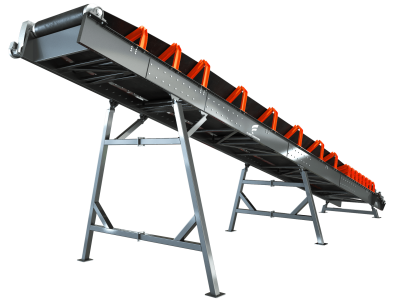How to Choose the Perfect Conveyor Belt for Your Manufacturing Business
- Written by NewsServices.com

Without the right infrastructure, any manufacturing business is likely doomed to suffer from a lack of efficiency from the outset.
In most well-maintained and highly optimised factories, the transportation of raw materials throughout various stages of the process is carefully managed and synchronised down to the smallest detail.
Conveyor belts have long been a mainstay of the manufacturing industry, often proving to be an invaluable addition.
Since there are so many types to choose from however, finding the right model can be difficult.
If you need some extra help in choosing your own factory conveyor belt system, here are some useful pointers to consider.
What Kind of Material Will You Be Transporting?
From the food and beverage industry to packaging plants and rock-crushing factories, conveyor belts are an integral part of so many fields of work that there is no single solution that can meet all expectations.
The ideal conveyor belt system for you will be informed by the materials you aim to transport around the factory floor. For example, if you manufactured perishable food goods, you would likely need to choose a conveyor that is easily cleaned and kept sterile, whereas if you mean to transport heavy goods like rocks, you will probably need a sturdier belt that can take the additional strain.
Thankfully, there are custom solutions available from expert retailers, so you might want to check out fluentconveyors.com for more insight.
The Shape and Size of the Belt
Conveyor belts come in all shapes and sizes. Deciding on the perfect one for your company will mean that you must consider its application carefully, how your employees will be interacting with the belts (if at all) and what functions you need the belt to perform.
For example, the traditional flat belt might not work for material that has a habit of sliding around, and a ridged option may not be the right fit for goods that need to be secured in place as they move.
In many instances, opting for a mix of different styles will be the best way forward, particularly if the manufacturing process requires a wealth of different steps and treatments.
Will It Fit in Your Workspace?
Forking out a great deal of cash for a conveyor belt, only to discover that it does not fit in your workspace can be disheartening to say the least.
This can also pertain to the size of the belt itself and whether your employees can comfortably interact with it if you need it to serve as part of a production line.
The Factory Environment
In many fields of manufacturing, it is necessary to work closely with extremely high temperatures or hazardous chemicals, such as jewellery, polymer or textile facilities.
If this is the case for your own company, it is worth thinking about whether your new conveyor belt system can sustain itself under harsher conditions or not.
Certain environments may require specialised options, such as belts made of steel or highly durable rubber compounds. If you are unsure as to which material best suits your personal applications, it is worth reaching out to the manufacturer for advice.



















